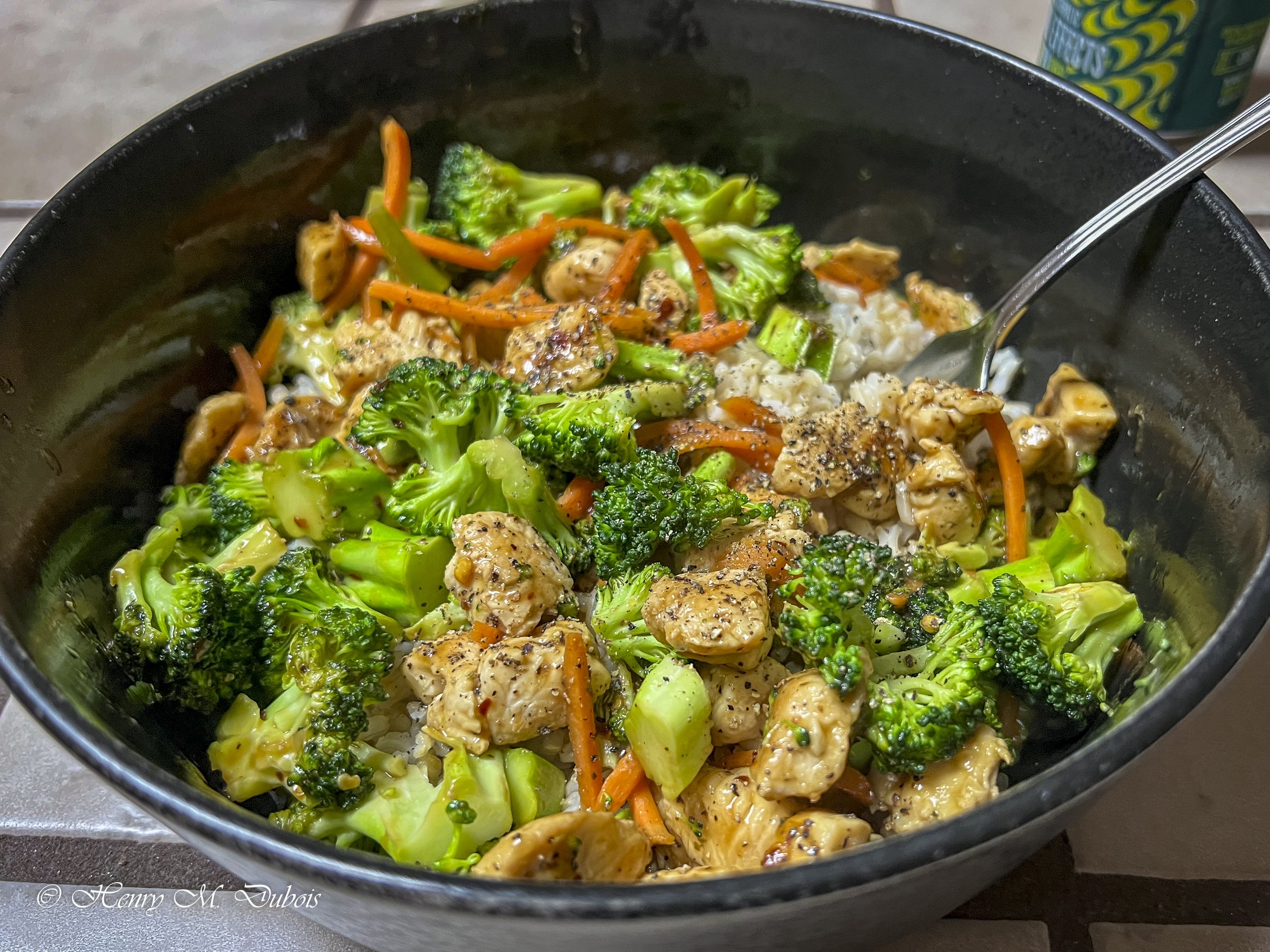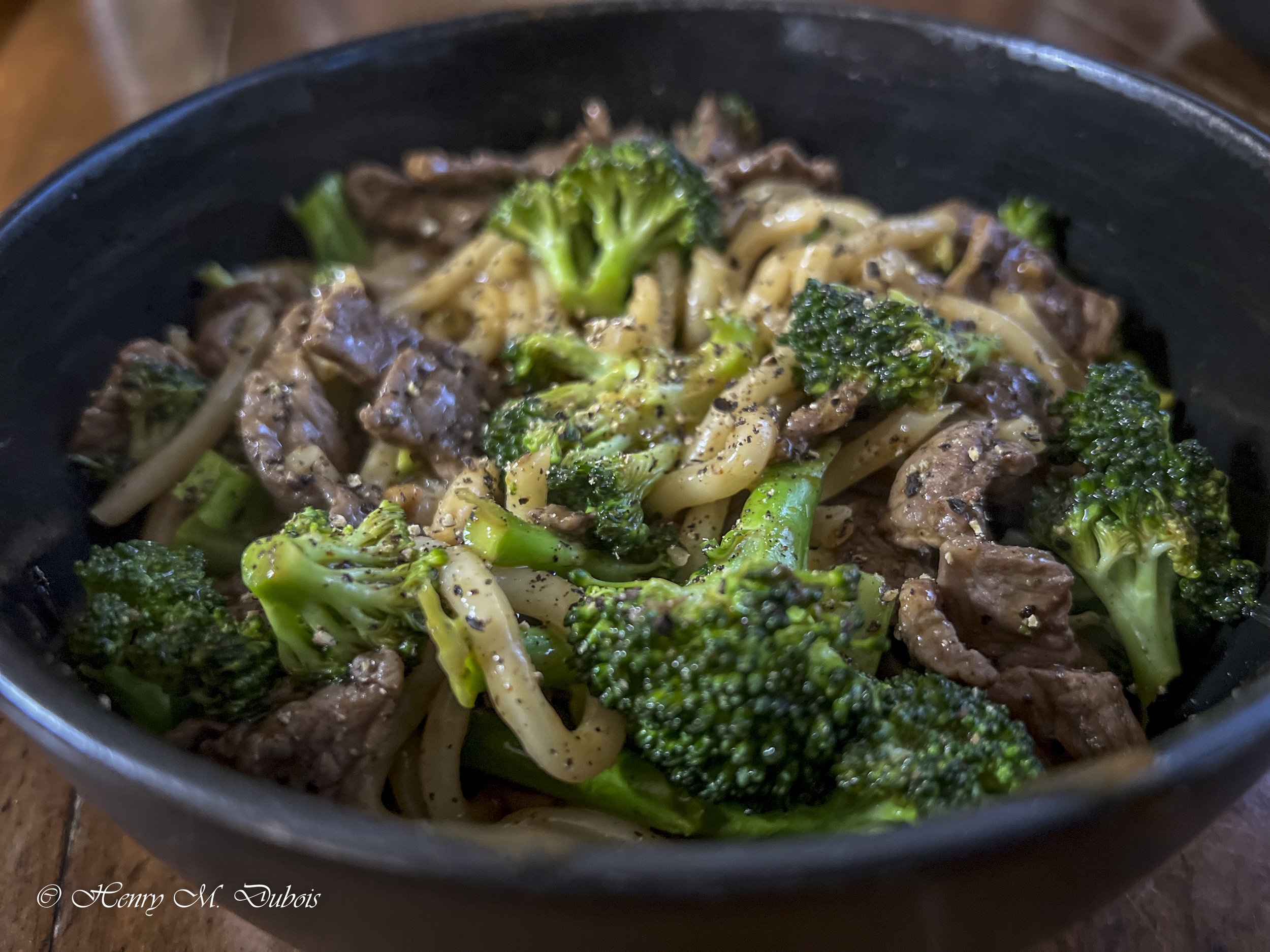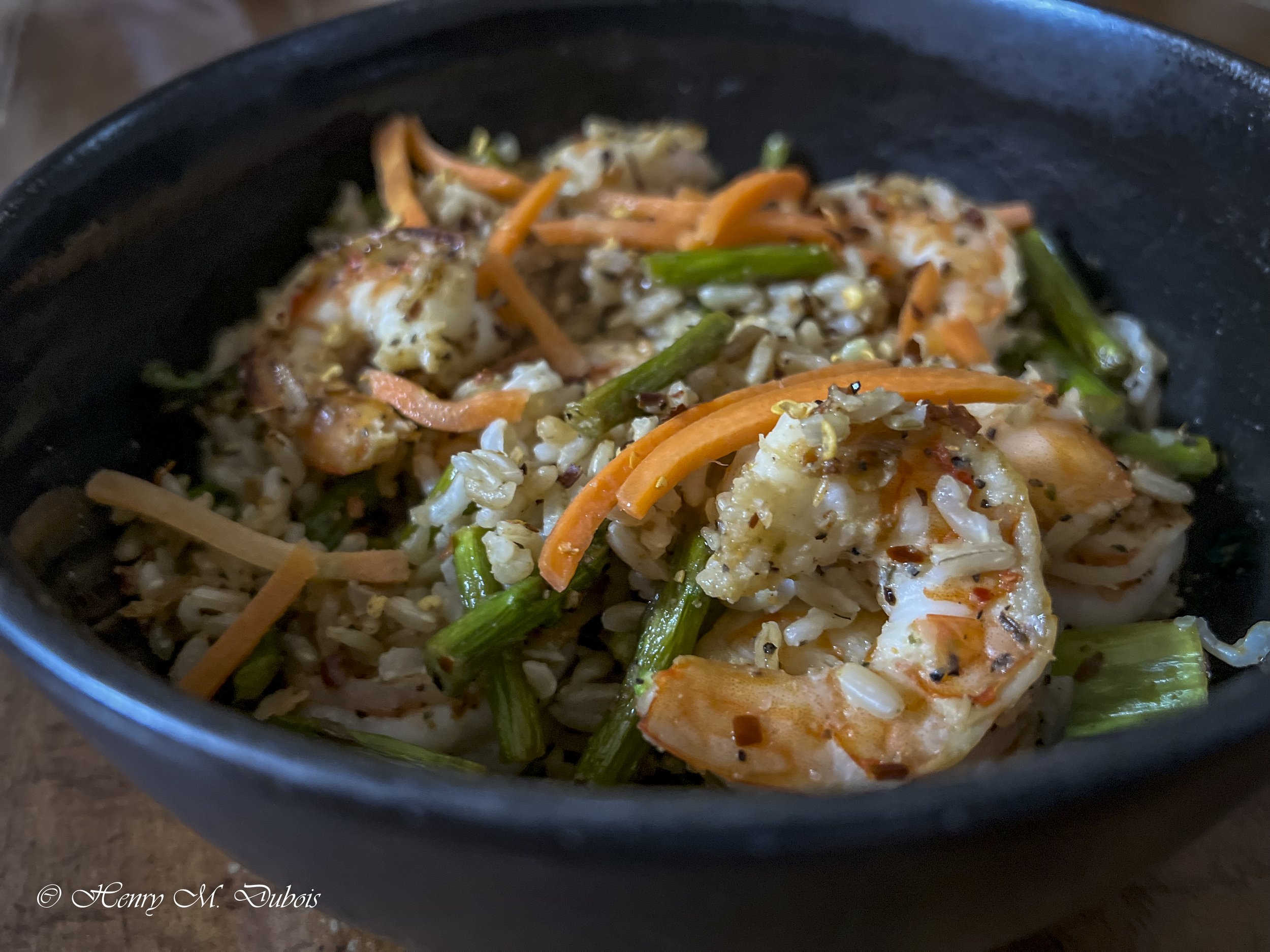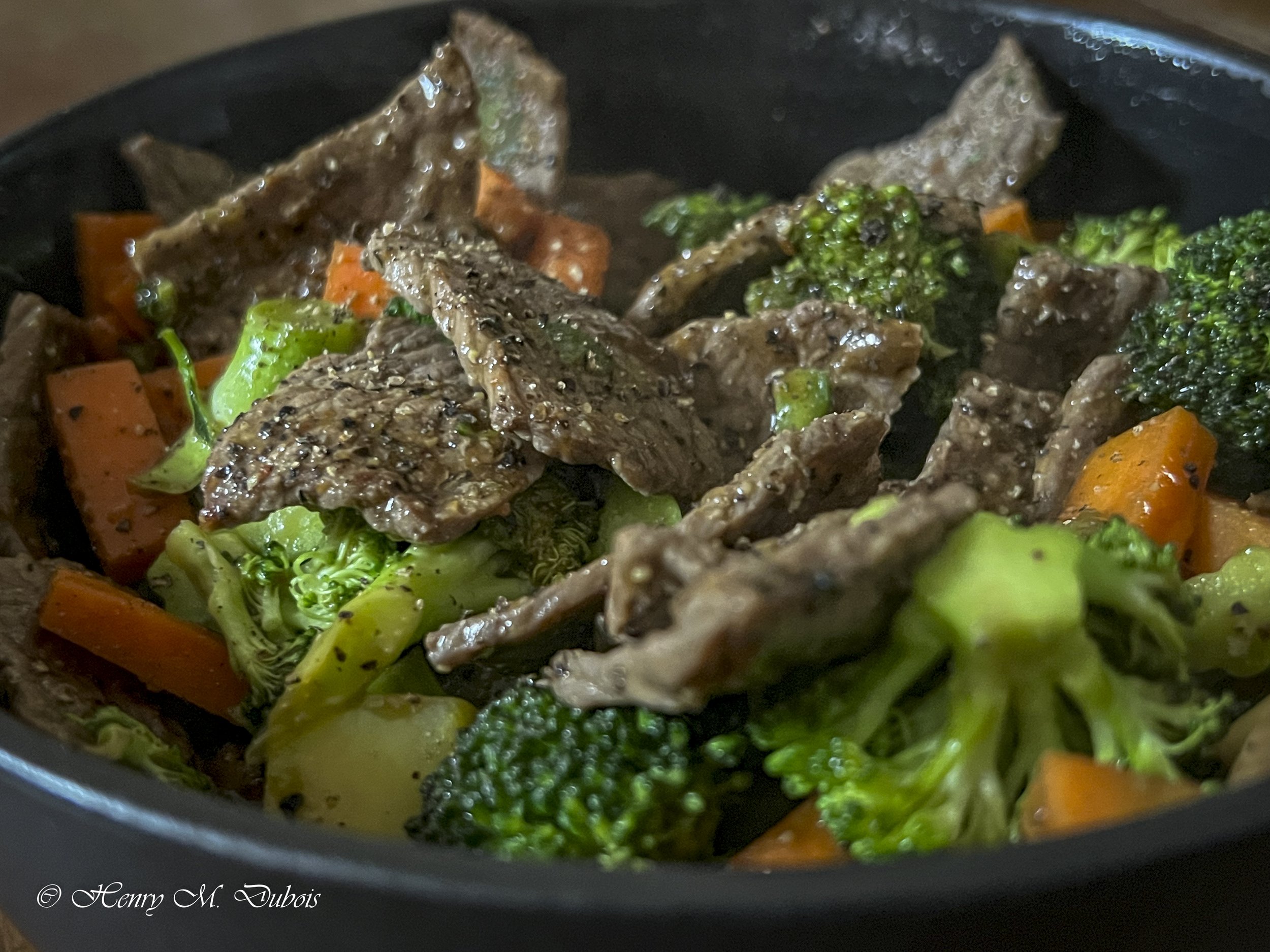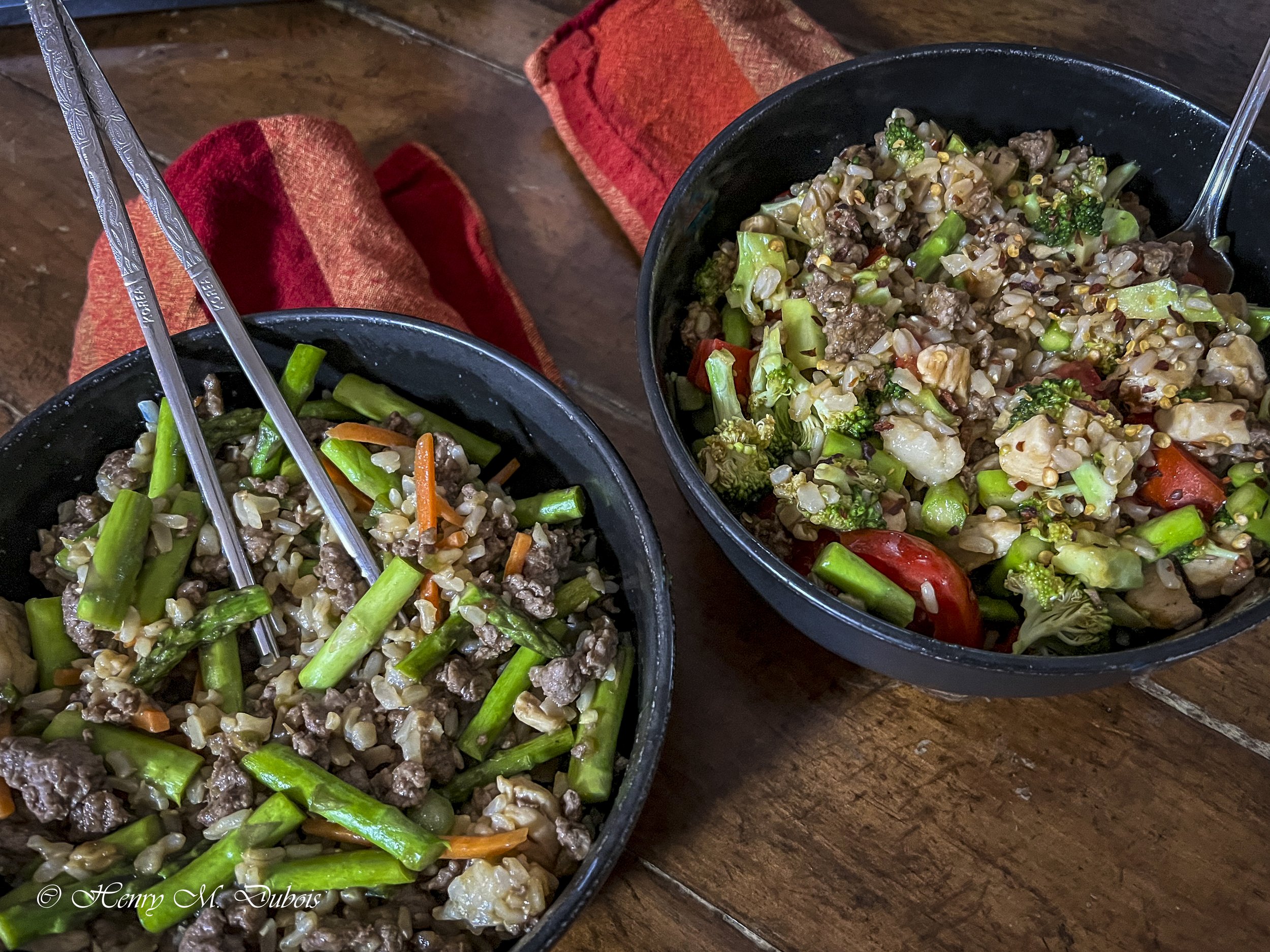Stirred-Up ‘Bout Stir-Fry…
I’m all stirred up y’all…
If you’ve read our article I'm Tired of Eating the Same Thing All the Time then you know we’re fans of using different flavors and textures to vary the taste of the same basic ingredients. This goes a long way to achieving the consistency needed to make lasting changes to your body.
Any busy professional knows how difficult it is to balance career and family in this crazy world. We need foods that are quick and simple while being delicious and satisfying.
Stir-fry is an amazingly versatile meal. You can use beef, chicken, pork or fish as the protein with rice or noodles as the starchy carb. Toss in your favorite veggies along with any number of sauces and you can make all sorts of quick and easy Asian-inspired dishes that are tasty, filling and work in a healthy diet.
We like to cook rice and noodles in batches – you can check out our tuturial on How To Batch Cook Rice (it works the same with any pasta or noodle) – and it makes things that much simpler. You can use pre-cooked, frozen chicken, shrimp or beef, along with frozen vegetables and a bottled sauce and it gets even easier.
The rice we cook most often is a brown basmati rice from Costco. A certain dog who lives here gets two heaping tablespoons in his ground beef and carrots so we almost always have it around. We make it pasta-style and it’s pretty easy but if you have an Instant Pot or a rice cooker, they’re all that way. Jasmine rice is also a favorite.
When it comes to noodles, any kind of pasta works well. We cook the entire box and might go from Italian to Asian to American during the week using the same basic ingredients. Each one tastes completely different and that’s the beauty of it.
There are also lots of Asian noodles available. One of our favorites is KA·ME Udon Stir-Fry Noodles. They’re already cooked and bagged; just dump them in the pan for a couple of minutes and they’re done. All that’s needed is to heat them up and allow the sauce to add its flavor.
When it comes to sauces, your grocery store probably has several shelves dedicated to stir-fry sauces and marinades. Our favorite bottled sauces are G Hughes Sugar-Free brand. I love Teriyaki Marinade and Eva’s go-to is Orange Ginger. There’s also Pineapple Ginger, Sesame Teriyaki and one simply called Stir-Fry Sauce. The calories and macros are the same for each of the G Hughes Asian sauces.
Just be careful with the amount of oil and fat in the sauce you choose because, calorie- and macronutrient-wise, they can have a big impact. I like to get my calories from something I can chew so I’m pretty cautious. I want just enough to flavor what I’m cooking because that means I get to make up the rest with meat, rice or noodles and vegetables. In the recipes below you’ll see we put the oil in the pan because that gives us better control.
Let’s get down to our nuts-and-bolts approach. We’ll share various recipes we use and even give you our own Asian-inspired marinade/sauce.
Check it out…
Spicy Garlic Ginger Beef Stir-Fry:
6 ounces steak strips
100 grams (½-pouch) KA·ME Udon Stir-Fry Noodles
100 grams fresh asparagus cut into 1” pieces
75 grams white mushrooms cut into quarters
Zeke’s Asian-style seasoning (recipe below)
1 teaspoon avocado oil
Salt & pepper, to taste
You can use any steak you like. Walmart sells a bottom round labeled stir-fry strips and they work great. They cook quickly and, since they’re thin, they’re not tough like a bottom round roast you’d normally see. The Bragg Aminos in Zeke’s seasoning is salty so there’s no need to season with salt prior to cooking. Feel free to vary the amount of crushed red pepper in the seasoning because it gets hot quickly.
The Numbers:
446 calories with 48 g P, 43 grams C, 9 grams F.
The How-To:
Make the seasoning in a small dish and allow the flavors to meld in the refrigerator for a few hours. Leave the beef in long strips or cut it into manageable pieces prior to cooking. Long strips and noodles are fun with chopsticks! You can use a couple of tablespoons of the seasoning to marinate the beef for a bit (preferred) or dump all of it into the pan during the cooking process. Both beef and chicken do well when marinated for a few hours before cooking.
Heat a skillet or wok on high heat. Put the oil in the pan and allow it to heat while you cut up the vegetables. If you marinated prior to cooking, pull the strips out of the marinade and carefully drop them in the hot oil. They’re thin and cook lightning quick so, as soon as they’re going and you’ve spread them out, put the vegetables in along with the rest of the sauce. When the vegetables are close to your desired level of doneness, drop in the noodles and let them cook for a few minutes. They just need to heat up and take on the flavor of the sauce. Once it’s in the bowl, season to taste with black pepper and more salt and crushed red pepper, if you dare.
Teriyaki Chicken & Broccoli Stir-Fry:
6 ounces boneless, skinless chicken breast
1 serving rice
100 grams fresh broccoli cut into bite-sized florets
75 grams carrot sticks cut into 1” pieces
10 grams fresh jalapeño
6 tablespoons G Hughes Sugar-Free Teriyaki Marinade
1 teaspoon avocado oil
Crushed red pepper, to taste
Salt & pepper, to taste
I normally use defrosted chicken breasts but you can stop by the store for fresh ones or, as mentioned, they make some that are already cooked and frozen. We usually have rice and fresh vegetables but there are always frozen vegetables in our freezer along with Uncle Ben’s Ready Rice, just in case. Feel free to vary the amounts in order to hit your numbers. I usually have 8 ounces of chicken and 1¼ -1½ servings of rice but smaller meals might require ¾-serving. Matchstick carrots, left raw, and tossed on top after cooking give a fabulous crunch to the dish.
The Numbers:
452 calories with 39 g P, 54 grams C, 8 grams F.
The How-To:
Heat a skillet or wok on high heat. Cut the chicken into strips or cubes, based on your preference, and season with salt and pepper. Ginger is great in Asian-inspired dishes and fresh ginger is even better. If you use fresh ginger, put it into the pan with the oil just before the chicken. Cut up the vegetables, put the oil in the pan and allow it to heat. Drop in the chicken. I usually lay it out so I can get a crispy crust on it. Once you flip it, and it’s almost done, you can toss in a bit of the jalapeno and a couple of tablespoons of the teriyaki sauce. Drop in the vegetables and the rest of the sauce and jalapeno and toss it around until fully cooked. You can serve the dish over the rice or, if you like, put your rice in the pan and let it all heat together. Once it’s in the bowl, season to taste with salt and black or crushed red pepper.
Orange Ginger Shrimp & Noodles:
6 ounces cooked, tail-off shrimp
1 serving whole wheat pasta
150 grams fresh zucchini, cut into 1” long, thin strips
50 grams matchstick carrots
6 tablespoons G Hughes Sugar-Free Orange Ginger Marinade
7 grams butter
Salt & pepper, to taste
This recipe uses plain old pasta noodles. We usually cook the entire box and go back and forth between Italian and Asian meals. The 50-70 count shrimp are an ideal size. They’re already cooked and peeled and come frozen. They thaw quickly and are ready to go in no time at all. Shrimp are mild and, like the zucchini, will accept the flavor of whatever you use to season and cook them. Keep a light hand with seasoning and you’ll end up with a very tasty meal. Lightly seasoned shrimp go really well with jasmine rice.
The Numbers:
443 calories with 44 g P, 53 grams C, 7 grams F.
The How-To:
Put the frozen shrimp in a small colander nested in a bowl and let them thaw. Make sure you measure out a little extra because the weight will go down after thawing and removing the tails. If they’re still a bit frozen when you put them in the pan, the heat will quickly take care of that and, since they’re already cooked, you don’t need to worry.
Cut the zucchini into thin slivers, keeping them about an inch long. Heat a skillet or wok on high heat. Make sure you put the butter into the pan early enough so it doesn’t burn. Season the shrimp with a bit of salt and put them in the pan. The shrimp heat quickly, so toss in the zucchini and the carrots, saving some of the matchstick carrots for the completed dish. Pour in the sauce and immediately place the noodles on top. Mix it around until the noodles are coated in sauce and have heated up. Place the completed stir-fry in a bowl, garnish with matchstick carrots and season to taste with salt and pepper.
Zeke’s Asian-Style Seasoning:
1-2 cloves garlic, minced
1 teaspoon crushed red peppers
¼ teaspoon ginger
1½ tablespoons Bragg Liquid Aminos
2½ tablespoons Rice Vinegar
1-2 tablespoons water
This recipe is plenty for half a pound of beef, chicken or pork. Fresh ginger is wonderfully aromatic so feel free to use it instead of the dried version and vary the amount according to your taste. Leave it out if it’s not your thing. Bragg Liquid Aminos are powerful so it doesn’t take much. The same holds true for the crushed red peppers. The sauce can get pretty spicy especially the longer the flavors are allowed to meld. A few tablespoons are enough as a marinade and there’s plenty left over for cooking. The vinegar will tenderize the meat and allow the other flavors to penetrate.
The Numbers:
16 calories with 3 g P, 4 grams C, 0 grams F.
The How-To:
Put the garlic and other spices into a small bowl and add the Liquid Aminos and vinegar along with the water. Stir, cover with foil, place in the refrigerator and allow the flavors to meld.
With a list of ingredients that’s almost endless, stir-fry is one of the most versatile meals around and we have yet to encounter a version that isn’t delicious or easy to prepare. These are just a few examples of what’s currently going on in our kitchen.
We’ve tried green onions, mushrooms, baby corn, snow peas and even Brussels sprouts in our stir-fry. You can find an enormous variety of noodles in the international foods aisle like egg and rice noodles, ramen-style and soba noodles along with plain old pasta. Feel free to experiment with fancy oils like sesame, peanut and soybean oil or those that have been infused. The variety of available sauces is even bigger. You’ll find hoisin, sweet and sour, fish sauce, yum yum and orange sauce along with prepared sauces like Kung Pao and General Tso’s and, the old standard, soy sauce. You’ll have trouble choosing!
All of these dishes range from pretty quick to really quick depending on how you do them. We typically use fresh vegetables and frozen meats we thaw the day we’re going to cook. If we’re making Zeke’s marinade we usually do it when we’re cleaning up after lunch. There’s almost always pre-cooked rice or pasta in the refrigerator and it takes just a few minutes to cut up the vegetables and heat the pan. After dinner, everything goes right in the dishwasher except the skillets and the knives, they get hand washed. A quick wiping of the cooktop and counters and you’re ready to enjoy dessert and the rest of your evening.
And that’s the way it should be…
Regards,
Henry
Sign up to receive more tips, recipes and tricks for building a lifestyle that produces lasting results.
No spam, no junk and you can unsubscribe at any time.

